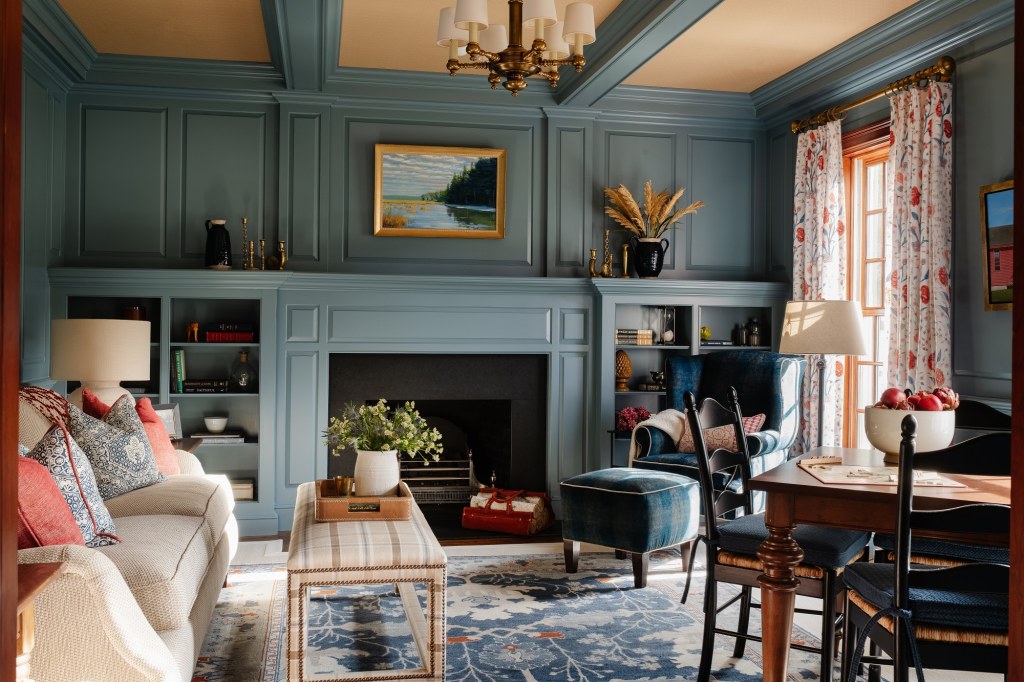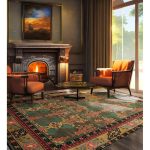Captivating Colonial Interiors: Unveiling Timeless Elegance And Inspiring Designs!
Exploring Colonial Interiors: A Glimpse into the Past
Welcome, Interior Enthusiast!
As a lover of all things related to home aesthetics, you are probably fascinated by the rich history and timeless beauty of colonial interiors. From elegant Georgian manors to cozy Dutch Colonial homes, these interiors offer a glimpse into a bygone era. In this article, we will delve into the world of colonial interiors, exploring their origins, characteristics, and the charm they bring to any space.
Introduction
The concept of colonial interiors refers to the design styles and elements prevalent during the colonial period, which spanned from the 16th to the 19th century. These interiors are influenced by various European countries, including England, France, Spain, and the Netherlands, each leaving a distinct mark on the design aesthetic.
3 Picture Gallery: Captivating Colonial Interiors: Unveiling Timeless Elegance And Inspiring Designs!



What: Colonial interiors encompass a range of styles, including Georgian, Federal, Spanish Colonial, Dutch Colonial, and Cape Cod. These styles are characterized by their attention to symmetry, classical proportions, and ornate detailing.
Who: Colonial interiors were primarily embraced by settlers in the American colonies and other regions influenced by European colonization. Wealthy landowners, merchants, and officials sought to recreate the opulent interiors they were familiar with in their home countries.

Image Source: acamporainteriors.com
When: Colonial interiors reached their peak popularity during the 18th century but continued to be influential well into the 19th century. The specific style prevalent in each region varied depending on the period’s historical context and the influences of different European countries.
Where: Colonial interiors were predominantly found in the American colonies, particularly along the East Coast. However, variations of colonial styles can also be seen in other regions influenced by European colonization, such as the Caribbean and South America.
Why: Colonial interiors reflect a desire for elegance, sophistication, and a connection to European culture. These designs were a way for settlers to showcase their wealth, status, and refinement in their new surroundings.
How: Creating a colonial interior involves incorporating key elements such as classic architectural details, refined furniture pieces, and a harmonious color palette. By combining these elements, one can recreate the timeless beauty and grandeur associated with colonial aesthetics.
Advantages and Disadvantages of Colonial Interiors

Image Source: michaelgaineysignaturedesigns.com
Advantages:
1️⃣ Timeless Appeal: Colonial interiors exude a timeless appeal that never goes out of style. The classic elements and attention to detail create a sense of elegance and sophistication that can be appreciated for generations.
2️⃣ Historical Significance: By incorporating colonial design elements into your home, you pay homage to a significant period in history. It allows you to create a space that is not only beautiful but also tells a story.
3️⃣ Versatility: Colonial interiors can be adapted to various spaces and design preferences. Whether you prefer a traditional, rustic, or modern twist, the foundational elements of colonial design can be customized to suit your taste.

Image Source: period-homes.com
4️⃣ Quality Craftsmanship: Colonial interiors often feature furniture and architectural details crafted with meticulous attention to detail. Investing in these pieces ensures durability and a level of craftsmanship that is difficult to find in modern mass-produced alternatives.
5️⃣ Connection to Nature: Colonial interiors often incorporate natural materials and earthy color palettes, creating a serene and grounding atmosphere. This connection to nature can enhance well-being and create a harmonious living environment.
Disadvantages:
1️⃣ Cost: Due to the intricate details and craftsmanship involved, creating a colonial interior can be costly. Authentic period pieces and skilled artisans may come with a higher price tag.
2️⃣ Limited Functionality: Some elements of colonial interiors may not align with modern lifestyles and practicality. For example, the formal layout and furniture arrangement may require more space and restrict flexibility.
3️⃣ Maintaining Authenticity: Achieving an authentic colonial interior requires attention to detail and historical accuracy. This can be challenging and may involve extensive research and sourcing of period-appropriate materials and furnishings.
4️⃣ Lack of Diversity: Colonial interiors are a reflection of a specific historical period and cultural influence. While they offer a unique charm, they may not cater to diverse design preferences or represent the multicultural nature of contemporary society.
5️⃣ Perceived Traditionalism: Some people may perceive colonial interiors as outdated or too traditional for their tastes. It is essential to adapt and blend colonial elements with modern design sensibilities to create a space that feels relevant and harmonious.
Frequently Asked Questions (FAQs)
1. Can colonial interiors be incorporated into a small space?
Absolutely! Colonial interiors can be adapted to various spaces. Consider incorporating key elements such as architectural moldings, classic furniture pieces, and a light color palette to create an illusion of spaciousness in a smaller area.
2. Are there any eco-friendly options for colonial interiors?
Yes! When sourcing materials and furniture for a colonial interior, look for eco-friendly and sustainable options. Opt for reclaimed wood, vintage pieces, and natural textiles to reduce your environmental footprint while maintaining the colonial aesthetic.
3. Can I mix colonial interiors with other design styles?
Absolutely! Mixing design styles can create a unique and personalized space. Consider blending colonial elements with modern or eclectic touches to add a contemporary twist to your colonial interior.
4. How can I create a colonial-inspired exterior?
To create a colonial-inspired exterior, focus on architectural details such as columns, pediments, and symmetrical facades. Choose a color palette that complements the surrounding landscape and opt for classic materials like brick or clapboard siding.
5. How can I add pops of color to a colonial interior?
While colonial interiors often feature a more muted color palette, you can add pops of color through accessories, artwork, or accent pieces. Consider incorporating vibrant hues in rugs, throw pillows, or curtains to create visual interest and personality.
Conclusion
In conclusion, colonial interiors offer a captivating glimpse into the past, showcasing the elegance and refinement of a bygone era. By understanding the origins, characteristics, and benefits of colonial design, you can create a space that pays homage to history while embracing your unique style.
Embark on a journey through time by incorporating colonial elements into your home, and watch as your space transforms into a haven of timeless beauty and sophistication.
Final Remarks
Creating a colonial interior is a labor of love that requires attention to detail, research, and a passion for history. While it may seem daunting, the end result is a space that not only reflects your personal style but also stands the test of time.
Remember, the key to a successful colonial interior lies in finding the right balance between historical accuracy and modern sensibilities. Embrace the charm and elegance of the past while infusing your own personality and taste into the design.
Now, armed with knowledge and inspiration, it’s time to embark on your own colonial interior transformation. Happy designing!
This post topic: Interiors


